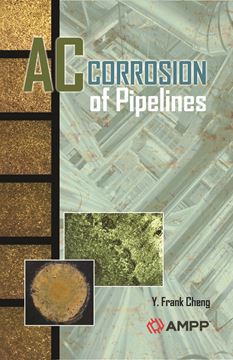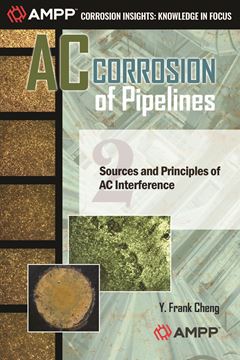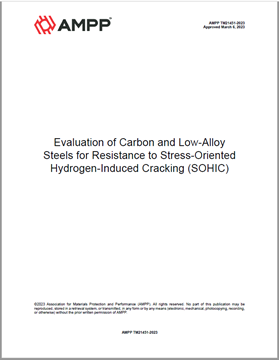Search
Products tagged with 'pipeline'
View as
Sort by
Display
per page
AC Corrosion of Pipelines-Chapter 2: Sources and Principles of AC Interfernce
Product Number:
37656-Ch02
$55.00
Advanced Corrosion Resistant Coating and The Requisite Technological Advancements for Its Application
Product Number:
51323-19485-SG
Publication Date:
2023
$20.00
Aggressive Stray Current Corrosion on an Onshore Crude Line
Product Number:
51323-19499-SG
Publication Date:
2023
$20.00
AMPP TM21451-2023, Evaluation of Carbon and Low-Alloy Steels for Resistance to Stress-Oriented Hydrogen-Induced Cracking (SOHIC)
Product Number:
AMPP TM21451-2023
Publication Date:
2023
$109.00
An Intelligent Flushing System for Oil or Gas Gathering Systems
Product Number:
51320-14686-SG
Publication Date:
2020
$20.00
Application of Hydrogen Service Fatigue Crack Growth Rate Models to a Simulated Remaining Life Assessment of Transmission Pipeline
Product Number:
51323-19368-SG
Publication Date:
2023
$20.00
Application of Probabilistic Model in SCCDA
Product Number:
51323-18956-SG
Publication Date:
2023
$20.00
Applying Machine Learning Techniques To Identify And Predict Behavior Of Rectifier And Groundbed State Change
Product Number:
51322-17833-SG
Publication Date:
2022
$20.00
Case Analysis Of Electromagnetic Interference Of AC Substation On Pipeline
Product Number:
51322-17517-SG
Publication Date:
2022
$20.00
Case Study - AC Mitigation Design without Powerline Data
Product Number:
51323-18983-SG
Publication Date:
2023
$20.00












